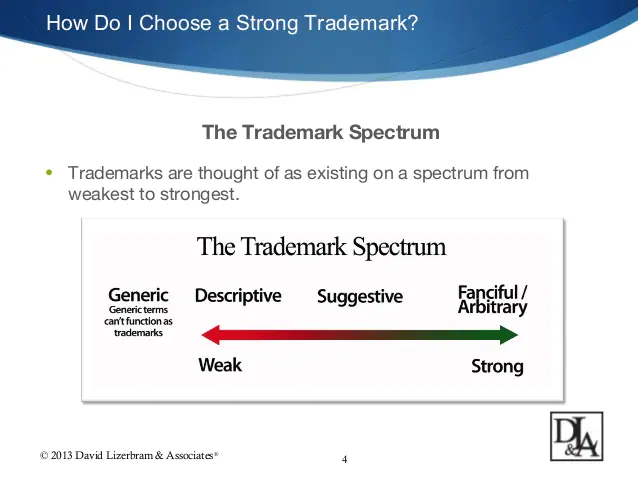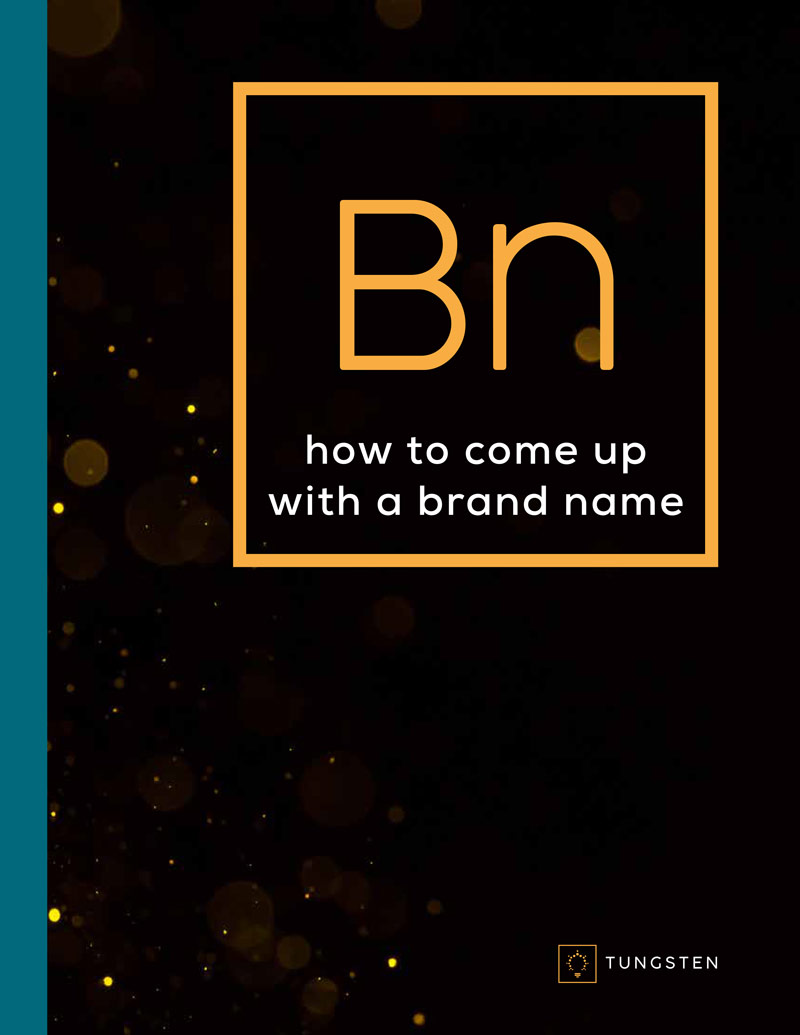Trademark Basics: How to Avoid Potential TM Issues When Naming and Branding Your Business
by David Lizerbram – Guest Columnist
Any word or combination of words that identifies your company’s goods and services is a trademark. Your company’s trademark portfolio might include the name of your company, brand names for your products and services, and even slogans or tag lines.
However, not all trademarks are created alike. Some trademarks are stronger than others. Some so-called “trademarks” can’t be legally protected at all. Running into this issue can lead to wasted marketing, advertising, and SEO dollars, a protracted rebranding process, and even costly legal proceedings.
Determining a strong trademark
How can you determine whether a brand name that you’re thinking of adopting is a strong trademark? One approach is to think about trademarks as falling on a spectrum from weak to strong.
Let’s start at the far left with Generic Terms. A generic term is the common name for a product or service, like “Cheese Pizza” or “Delivery Service.” Generic terms can’t be protected as trademarks. That means if you give your product a generic name, any of your competitors can use the same name.
Don’t believe what someone else might have told you—just because a brand name is popular doesn’t mean it’s become generic. KLEENEX® and GOOGLE® still enjoy trademark protection because their owners have taken the proper steps to ensure that the public understands that these are brand names, not common terms for goods and services.

The next category is Descriptive Trademarks. A trademark is considered to be descriptive when the brand name involves an existing word or phrase that’s connected to the product or service.
SPEEDY DELIVERY SERVICE might be a descriptive trademark, as might SIX STRING GUITARS.
Unlike generic terms, descriptive terms can be protected as trademarks. However, the rights associated with these marks can be very limited. That’s not to say you should always stay away from descriptive trademarks; BEST BUY® has been fairly successful. But a company should only adopt a descriptive term as a trademark when they’re willing to invest in a substantial and long-term advertising campaign to inform the public that this term is meant to be identified solely with their business. Even that approach can be risky, so, for most new products and services, the best practice is to avoid descriptive terms whenever possible.
Moving towards the “Strong” side of the spectrum, we arrive at Suggestive Trademarks. These are marks suggest a quality or feature of the product or service, but don’t come right out and say it.
Famous examples include GREYHOUND® for bus services, CHICKEN OF THE SEA® for tuna, and COPPERTONE® for suntan oil. As you can see from these examples, a suggestive trademark creates a picture in your mind or forces you to think (hopefully in a positive fashion) about the product or service. Suggestive marks are among the strongest types of trademarks. However, there can be a fine line between suggestive and descriptive, so tread carefully.
Finally, we come to Arbitrary and Fanciful Trademarks. These are the strongest kinds of trademarks.
Arbitrary trademarks consist of a word or words that have nothing to do with the goods or services. Examples include APPLE® for computers or STONE® for beer.
Note that APPLE couldn’t be a trademark for apples; it would be generic. For computers, cell phones, and watches, however, it’s clearly an arbitrary term having no inherent connection to the products.
Fanciful marks are coined words (neologisms) that have no meaning other than in connection with the trademark. Most pharmaceutical names are fanciful marks; other examples include EXXON® and VERIZON®.
Arbitrary and Fanciful marks are, by their nature, inherently distinctive. They are, relative to other types of marks, easy to register and protect.
To sum up, remember that Generic terms can’t be protected at all, and Descriptive terms are only entitled to limited legal protection, if any. Suggestive, Arbitrary, and Fanciful marks, on the other hand, tend to be very strong.
I want to leave you with a word of caution: Don’t get too hung up on the Trademark Spectrum. It’s a useful tool, but when you’re evaluating the strength of a brand name, there are other factors to consider as well. Context is everything, so, when in doubt, be sure to consult an experienced trademark professional for advice.
Our thanks to David Lizerbram for providing this article. For more information on company trademarking, you can reach David at:
David Lizerbram & Associates®
Business Law Strategy
Website: www.LizerbramLaw.com
BY Phil Davis
Brand Naming Expert
With over twenty-five years of company naming and branding expertise, Tungsten founder Phil Davis is a marketing and advertising veteran, having personally named over 250 companies, products and services worldwide. As a sought-after naming expert, Phil has been quoted in The Wall Street Journal, Inc.com, Businessweek, Entrepreneur, and Newsday.




